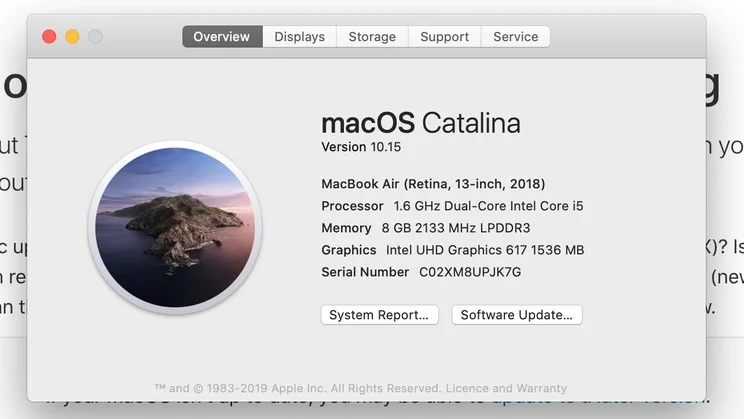To help us provide you with free impartial advice, we may earn a commission if you buy through links on our site. Learn more

Whenever a new operating system is released, or one reaches the end of its life, it can be confusing to know whether you should be upgrading or not.
Running the most up-to-date operating system, whether it’s on your mobile, tablet or PC, not gives you access to all the latest features, it also protects you and your files from security flaws.
Software is constantly evolving and hackers, as well as security experts, are always are on the hunt for vulnerabilities that could be exploited. When these are discovered, the software manufacturers release what’s known as a “patch” which is an update that plugs the gap.
At other times, the particular operating system is so old that its manufacturer stops issuing updates, leaving it at risk without a fix. In this instance, the only way to protect yourself is to stop using that operating system by upgrading or abandoning the device.
The most recent example of this is Microsoft pulling support for Windows 7.
Since 14 January 2020, Microsoft has stopped issuing regular updates for all computers on the Windows 7 network, which includes security patches and all technical assistance.
Such is the potential threat of using this now out-of-date software, the National Cyber Security Centre (NCSC) – the public-facing arm of the UK government’s intelligence agency GCHQ – is warning people running Windows 7 to stop using online banking, emails and other sensitive accounts as soon as possible to avoid being left vulnerable to hackers.
Out-of-date Windows 7 devices were also said to have played a major role in the WannaCry scandal that hit the NHS in 2018, just to give you the potential scale of the risk. Until 2016, upgrading to Windows 10 from Windows 7 was free, however it now costs £120 for Windows 10 Home, £220 for Windows 10 Pro and £339 for Windows 10 Pro for Workstations.
READ NEXT: How to upgrade to Windows 10
What operating system am I using?
If you’re affected by this change, or you’re looking to upgrade your phone or computer and want to know which operating system you’re using, we’ve explained how to find out below.
Windows
Microsoft has a useful, detailed support page that helps you discover which operating system you’re using but the basic steps are below:
Windows 7
- Go to the Start menu
- Type Computer in the search box
- Right-click on Computer
- Select Properties
Windows 8.1
To find out which version of Windows your device is running, press the Windows logo key + R, type winver in the Open box, and select OK.
If your device is running Windows 8.1 or Windows RT 8.1 do the following:
- On a touchscreen device, swipe in from the right edge of the screen, tap Settings | Change PC settings or, if you’re using a mouse, point to the lower-right corner of the screen, move the mouse pointer up, click Settings | Change PC settings
- Select PC and devices | PC info
- Under Windows you’ll see which edition and version of Windows your device is running
Windows 10
Press the Windows logo key + R, type winver in the Open box, and select OK.
- Select the Start button | Settings | System | About
- Under Windows specifications, check which edition and version of Windows your device is running
Mac OS
- From the Apple menu in the corner of the screen, choose About This Mac
- The macOS name will be shown, followed by its version number
- If you need to know the build number as well, click the version number to see it
Android
- Open Settings on your Android device
- Tap System | Advanced | System update.
- You’ll now see your “Android version” and “Security patch level”
iOS
On an iPhone, iPad, or iPod touch go to Settings | General | About.
On your iPod, iPod classic, iPod nano, or iPod mini:
- Press the Menu button until the main menu appears
- Go to Settings | About.
- The software version of your device should appear on this screen
- On iPod nano (3rd or 4th generation) and iPod classic, press the Centre button twice on the About screen to see the software version
Linux
Run the command: uname -srm or uname –kernel-name –kernel-release –machine
This will show you the Linux kernel name, version of the kernel and type of hardware you’re using.






